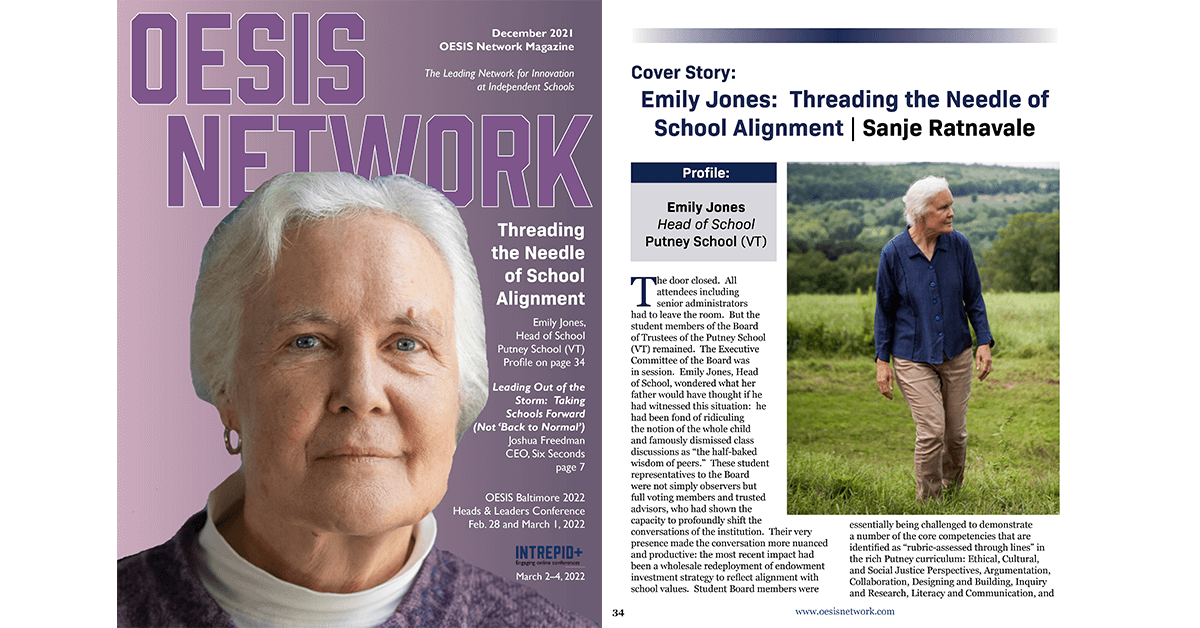Emily Jones, Head of School, The Putney School (VT) is featured as the cover story profile in OESIS Network Magazine, December 2021.
The door closed. All attendees including senior administrators had to leave the room. But the student members of the Board of Trustees of the Putney School (VT) remained. The Executive Committee of the Board was in session. Emily Jones, Head of School, wondered what her father would have thought if he had witnessed this situation: he had been fond of ridiculing the notion of the whole child and famously dismissed class discussions as “the half-baked wisdom of peers.” These student representatives to the Board were not simply observers but full voting members and trusted advisors, who had shown the capacity to profoundly shift the conversations of the institution. Their very presence made the conversation more nuanced and productive: the most recent impact had been a wholesale redeployment of endowment investment strategy to reflect alignment with school values. Student Board members were essentially being challenged to demonstrate a number of the core competencies that are identified as “rubric-assessed Throughlines” in the rich Putney curriculum: Ethical, Cultural, and Social Justice Perspectives, Argumentation, Collaboration, Designing and Building, Inquiry and Research, Literacy and Communication, and Self-knowledge /…


